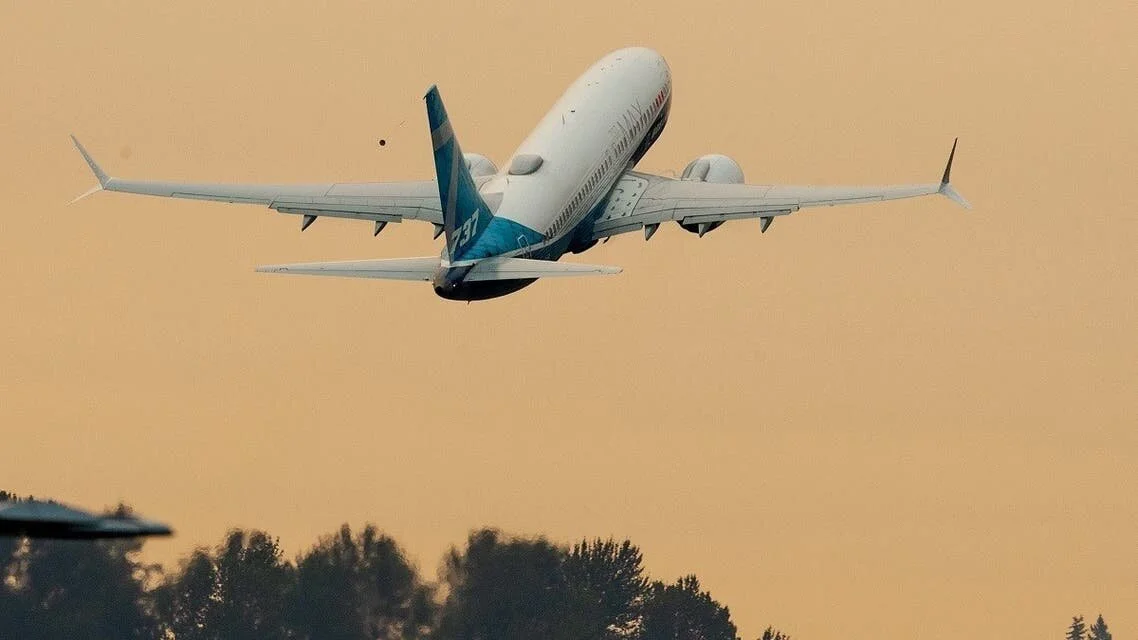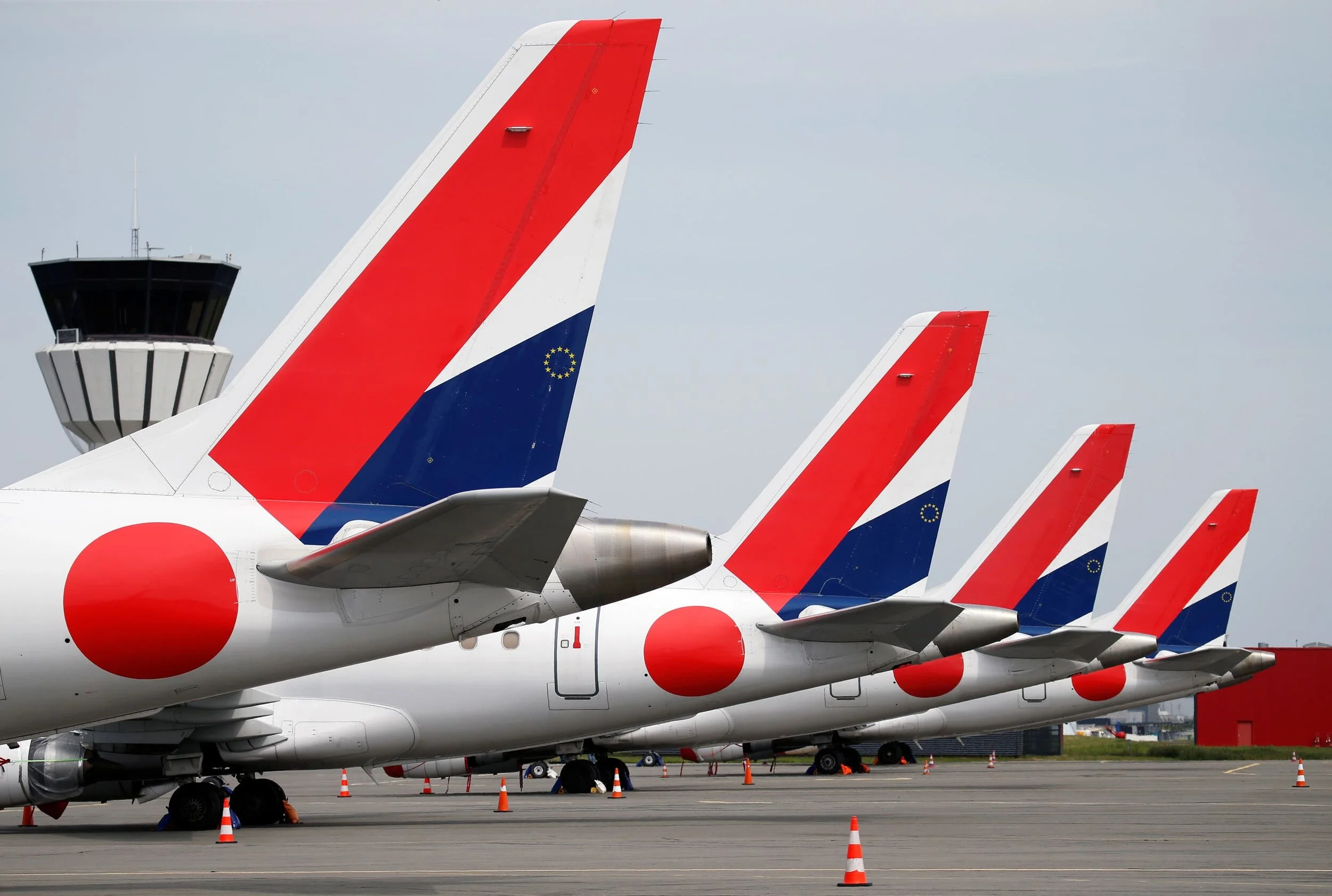Flying not so high: Why biofuel can't meet aviation's needs
Federal Aviation Administration (FAA) Chief Steve Dickson pilots a Boeing 737 MAX aircraft on takeoff of an evaluation flight from Boeing Field in Seattle, Washington, US, on September 30, 2020. (File photo: Reuters)
A good businessman used to be certain of a few things that were not taught on an MBA program. Without revealing all of our secrets, one of these “certain truths” was that flying to meet your partners face to face was an absolute necessity. The luxurious hotels and expensive entertainment, the late-night “deal-closing” in exclusive locations accompanied by exotic food and drink, were all just part of the rough life of a global executive. Please forgive my ironic tone. For most people, my family included, these trips were called “jollies” – in other words, they were fun.
But for the older airlines, even in the pre-COVID world, there were clouds on the horizon. Whether these trips were necessary or just fun, the airlines certainly were starting to have an image problem. Their kids were being taught at school and university that these enormous flying machines, with fantastically powerfully jet engines, burn huge amounts of fossil fuel. As we all know now (even the globe-trotting businessmen) those good ole fossil fuels generate a whole lot of greenhouse gases which are causing climate change.
And so the airline industry has been working on ways to improve their less-than-green image and entice the environmentally savvy millennial generation to continue to fly, just like their parents did.
They added “winglets” – those small and strange looking upturns on the end of the long wings – which can improve fuel efficiency up to 10 percent by reducing the vortices, and hence decrease drag. As an engineer, I like to know these things.
They used better navigation systems to avoid storms and headwinds and save fuel. Then some bright spark in air traffic control suggested smoother climbing and descending. The concept of Continuous Climb Operations (CCO) and Continuous Descent Operations (CDO) was born. A bit like the way my stepfather taught me to drive – smooth acceleration and no sudden braking.
All of which was fabulous and all of which saved fuel and money, but none of which was headline-grabbing. The media wasn’t that fussed to write about winglet design and everyone already assumed pilots tried hard to avoid storms, despite the bumpy rides many of us have had over the years. The airline industry needed something new. Something with media appeal. A new green idea that would get them on TV to tell the world that they had a solution to their huge fossil fuel carbon footprint.
HOP! for AIRFRANCE Embraer 170 aircrafts are parked on the tarmac at Lille-Lesquin Airport following the coronavirus disease (COVID-19) outbreak, in Lesquin, France, May 7, 2020. (File photo: Reuters)
And they called it biofuel. But not just biofuel – this was aviation biofuel. The media loved it – the name was clear, it sounded green, futuristic, and everyone understood what it meant, didn’t they?
Unfortunately, those of us who work in the biofuels industry, know that there’s a pretty big problem with this wonderful new marketing idea.
To make any fuel you need raw materials. For fossil fuels, it is crude oil deeply buried beneath our feet, and for biofuels, it is cooking oil from our kitchens. You can make biofuel from lots of other things (wood, grass, nuts, and seeds), but those raw materials all make the production prohibitively expensive.
For years it has been clear that there is a global competition for the waste cooking oil from our kitchens to satisfy the needs of low carbon footprint biofuels for the transport industry, specifically trucks and buses. Over the last two decades, we have seen the road transportation industry needs outstrip supply.
Today, over 64 countries demand by law that all road diesel fuel must contain at least 5 percent biodiesel. That volume of demand is simply huge and the global biofuels industry is struggling to keep up.
The sad truth for the aviation industry is that there is not enough raw material anywhere on the planet to supply their needs too. It's quite simple. Global mathematics doesn't work.
But that hasn’t stopped the aviation marketing machine. A recent “pioneering biofuel flight” received huge publicity as it left Seattle. The enthusiastic journalists onboard the aircraft trumpeted that aviation biofuel is indeed the future of aviation. The sad truth was that on this flight, over 120,000 liters of fossil fuel was consumed, and just 600 liters of biofuel was added to the mix. Oh, and the 600 liters cost six times the normal price of Jet A1 fuel. Quite how that constituted a “pioneering biofuel flight,” my simplistic mathematic brain cannot fathom.
And that’s why I think the airline industry is jetting off in entirely the wrong direction.


